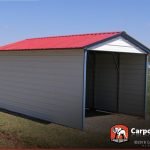Roofing in hot climates presents unique challenges, but it doesn’t have to be difficult if you know what you’re looking for and understand the trade-offs. In fact, the best types of roofs in hot climates are often far simpler than those used in temperate or cold climates, and one of them may even be the perfect fit for your home or commercial property. Let’s find out what some of those options are!
Different Types of Roofing Materials
Of all roofing material, concrete roof tile is typically the most popular. It is low-maintenance and long-lasting, an excellent choice for hot climates. However, it does require some maintenance from time-to-time as it will wear with time. Another material that could be good for hot climates is metal roofing. Metal roofs are also low-maintenance and long-lasting, but are more expensive than concrete tiles.
Safety Tips
For some people, a hot climate is no big deal. But for many others, it can be challenging to stay cool and comfortable with high temperatures, high humidity, and limited air circulation. The best way to keep your home at an optimal temperature is by installing the right type of roof. There are four basic types of roofs that provide different benefits for hot climates: metal roofs, clay tiles, slate tiles and concrete tiles. All of these choices offer cooling relief but they also come with pros and cons.
The Concrete Tile
The most common type of roofing material used in hot climates is concrete tiles, which are often known as clay tiles. Concrete tiles are made from clay, which makes them great at absorbing heat and retaining it. This material also resists water damage and termites.
The Asphalt Shingle
Asphalt shingle roofs are popular because they are inexpensive and easy to install. However, when it is hot outside asphalt becomes brittle and can crack or split. These types of roofs also do not retain heat well and can leave your house more susceptible to freezing temperatures.
The Metal Roof
Metal roofs are an excellent choice for hot climates. They have excellent thermal properties and low reflectivity, so they can help keep your home cooler by reflecting away heat. Metal roofs also offer superior durability and fire resistance, as well as wind and hail resistance, which is especially important for storm-prone areas. Plus, with today’s technology, metal roofs can be made to mimic other materials like clay tile or shake shingle (although they will not be as durable).
The Slate Tile
Slate tiles are beautiful and durable, and they can be used on roofs of all shapes and sizes. Slate tile roofs are made from thin sheets of slate that are cut into pieces and then shaped into roofing tiles. The slates are laid side by side with mortar filling in any gaps between them. Slate is one of the most durable roofing materials available, so slate tile roofs will last for many years with minimal upkeep. However, if not cared for properly, slate tiles may become brittle and break over time.
Maintenance Requirements
The first thing you need to know is that there are three types of roofs that can withstand high temperatures, which are tile, metal, and concrete. Tile roofs are very popular among homeowners with hot climates because they cool down quickly. Metal roofs have high reflectivity and can be painted or anodized to reduce heat absorption. Concrete roofs have excellent insulation properties, but they are heavy and expensive.
Cost Estimates
The cost for roofing work largely depends on the type of roof you choose. In general, there are three types of roofs that are typically used in hot climates. These include clay tile, steel or metal panels, and asphalt shingles. Clay tile roofs provide excellent insulation and can be fairly expensive to install. Steel or metal panel roofs are typically cheaper than clay tile but provide less insulation and durability.
Moisture Control
Moisture on your roof can cause structural damage and rot. If you live in a hot climate, it is important to choose an appropriate type of roof that will retain as little moisture as possible. In general, roofs with high pitch (a slope angle of 10-35 degrees) are best for hot climates because they shed water quickly. Even with low-slope roofs, gutters and downspouts should be installed to channel rainwater away from the foundation.









